Technology enhanced learning is complex and must be prepared carefully. We all know that. Of course, we also know how to apply constructive alignment and scholarship of teaching for successful courses. But with every new technology it seems that nothing works anymore, and we have to start our course designs from scratch. Even worse, we get impatient if the technology does not work as we expect it. Again, education is complex, and if technology is involved, double so.
Wouldn’t it be great, to have a tool that bundles this complexity, which allows to design and re-design blended learning concepts, and is easy enough for everybody to use independently from prior technology enhanced teaching experiences?
This is why we developed the Learning Design Cards (picture 1).

The Learning Design Cards help us to visualise and reflect on our educational designs. The cards keep important aspects in view when designing learning activities. They enable us to move from abstract ideas to concrete learning scenarios in a few steps. The eight learning events from Leclerq & Poumay (2005) are the basis for the cards. A learning event integrates the characteristics of similar learning activities.

In educational designs we can distinguish eight types of learning events:
Receive, Practice, Debate, Explore, Imitate, Create, Experiment, and Meta-Learn (picture 2). Each learning event is shown on a separate card. A card set consists of 8 cards (picture 1).
Let’s take a closer look to one of these cards. Each card takes both roles into account, the lecturers and the learners‘ role (picture 3). Both roles are assigned with verbs that can be selected accordingly (picture 4). A learning activity results from the interaction between both roles.
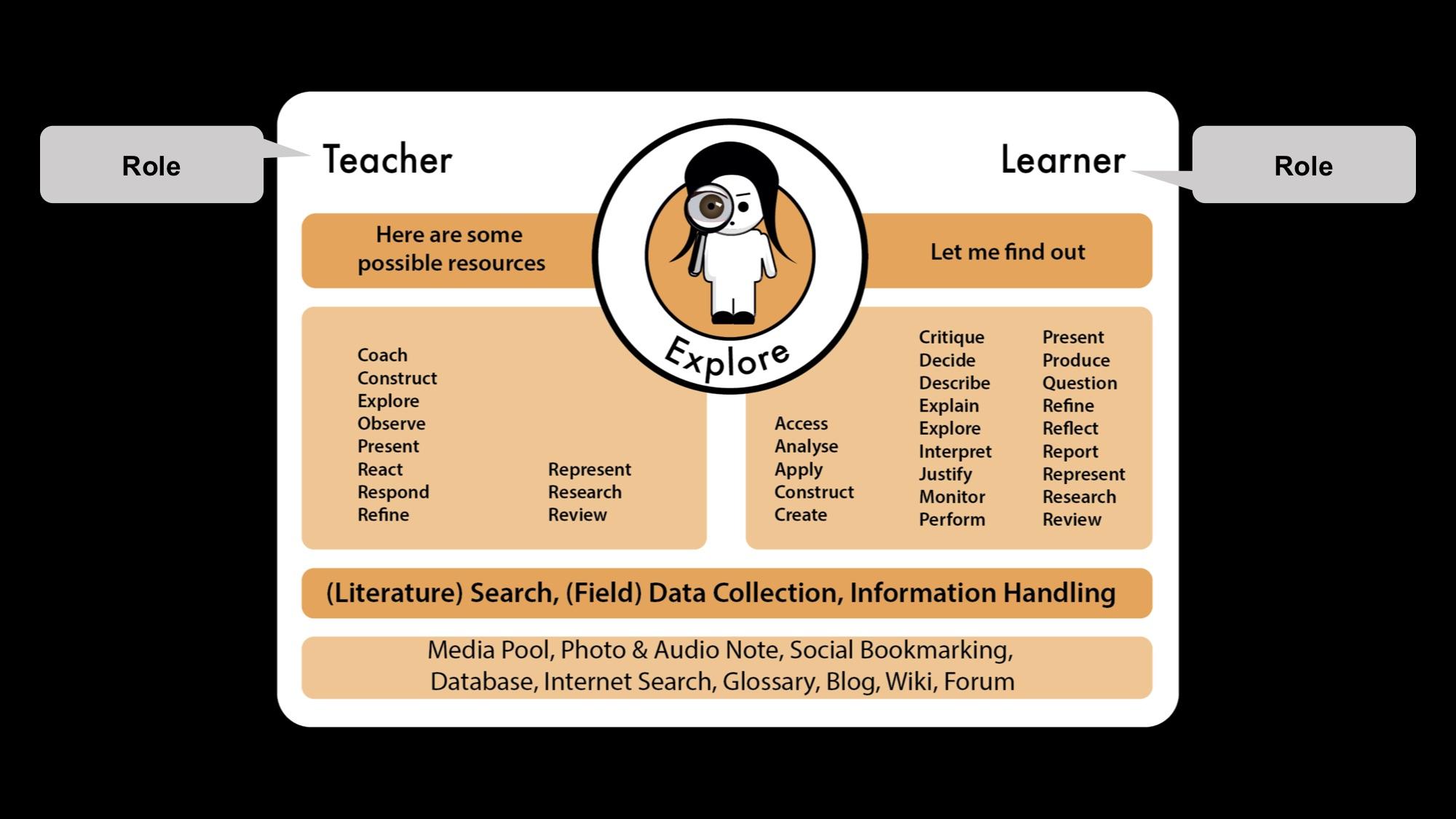
Should learners „question“ learning content, lecturers have to „present“ the content first. The variety of verbs – teaching and learning verbs – serves as a suggestion for formulating learning tasks and supports the creation of learning activities.
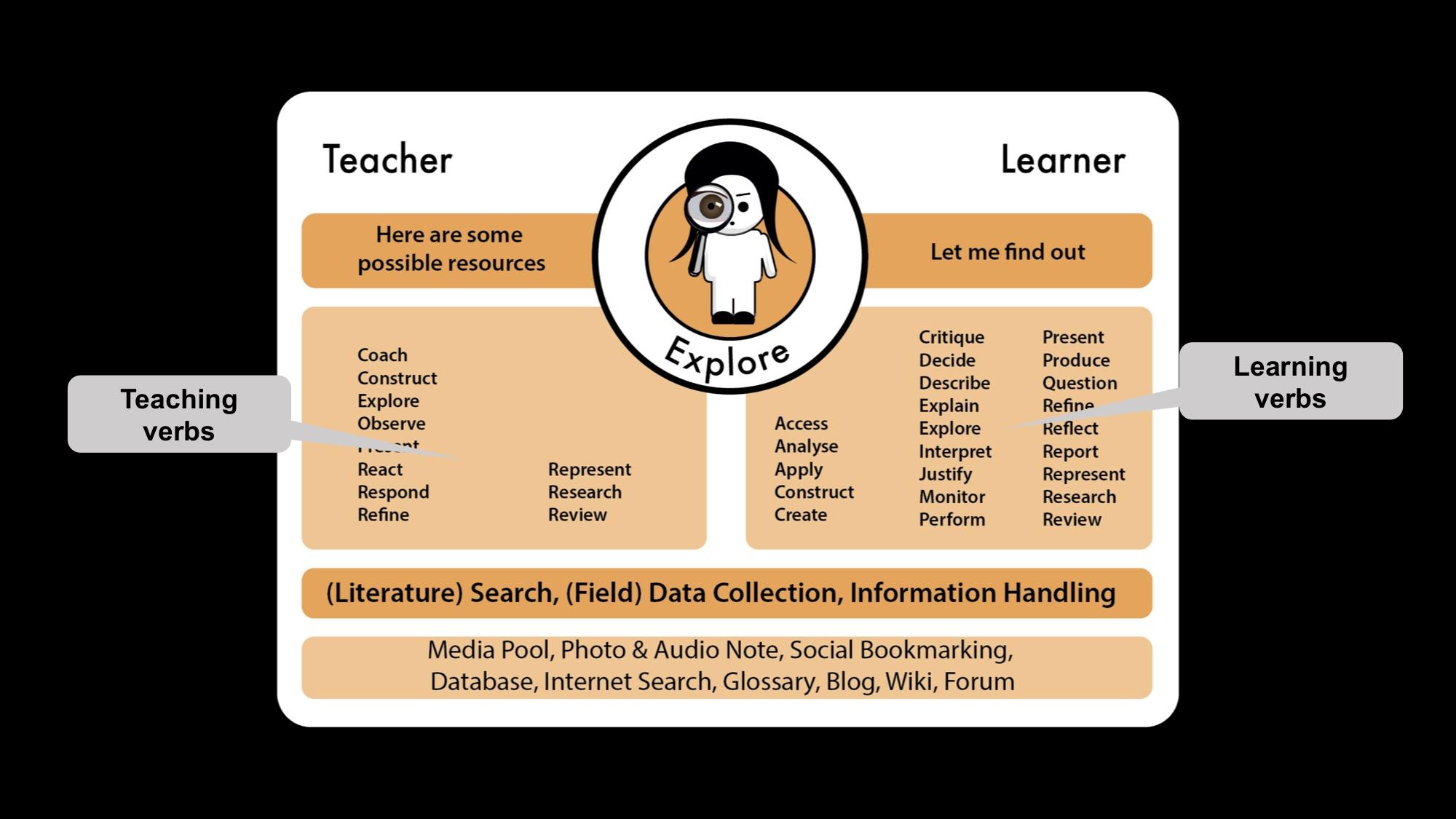
Each learning event is associated with methods, tools, and resources that lecturers use in the transfer of learning content as well as learners utilise in acquisition of knowledge in presence or online mode (picture 5).
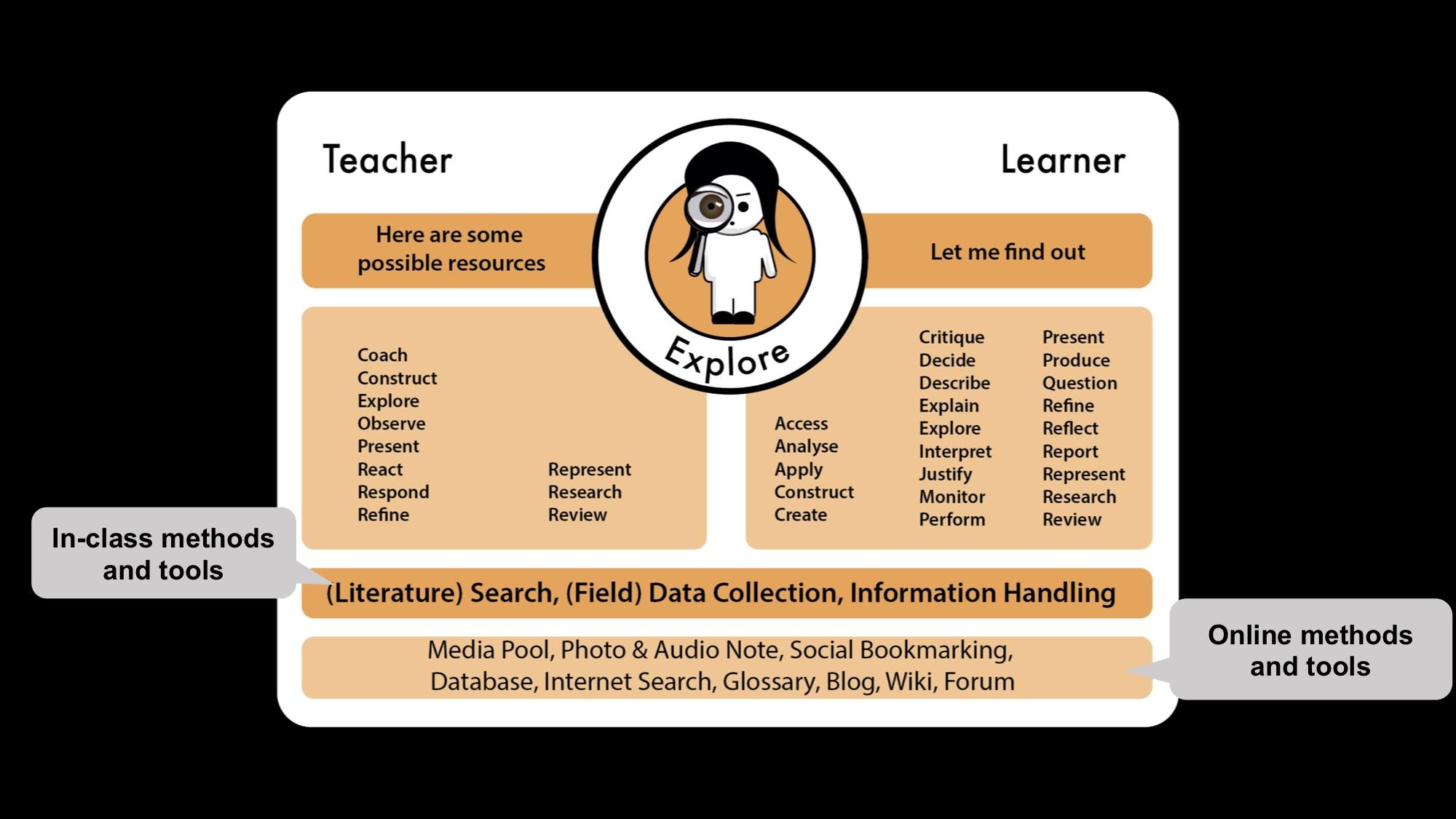
On the backside of the cards is space for notes about planned learning activities.
Before we start, the learning subject should be chosen for the learning activity. The subject is based on the course topic and its subtopics. Learning objectives are derived from the learning subject.
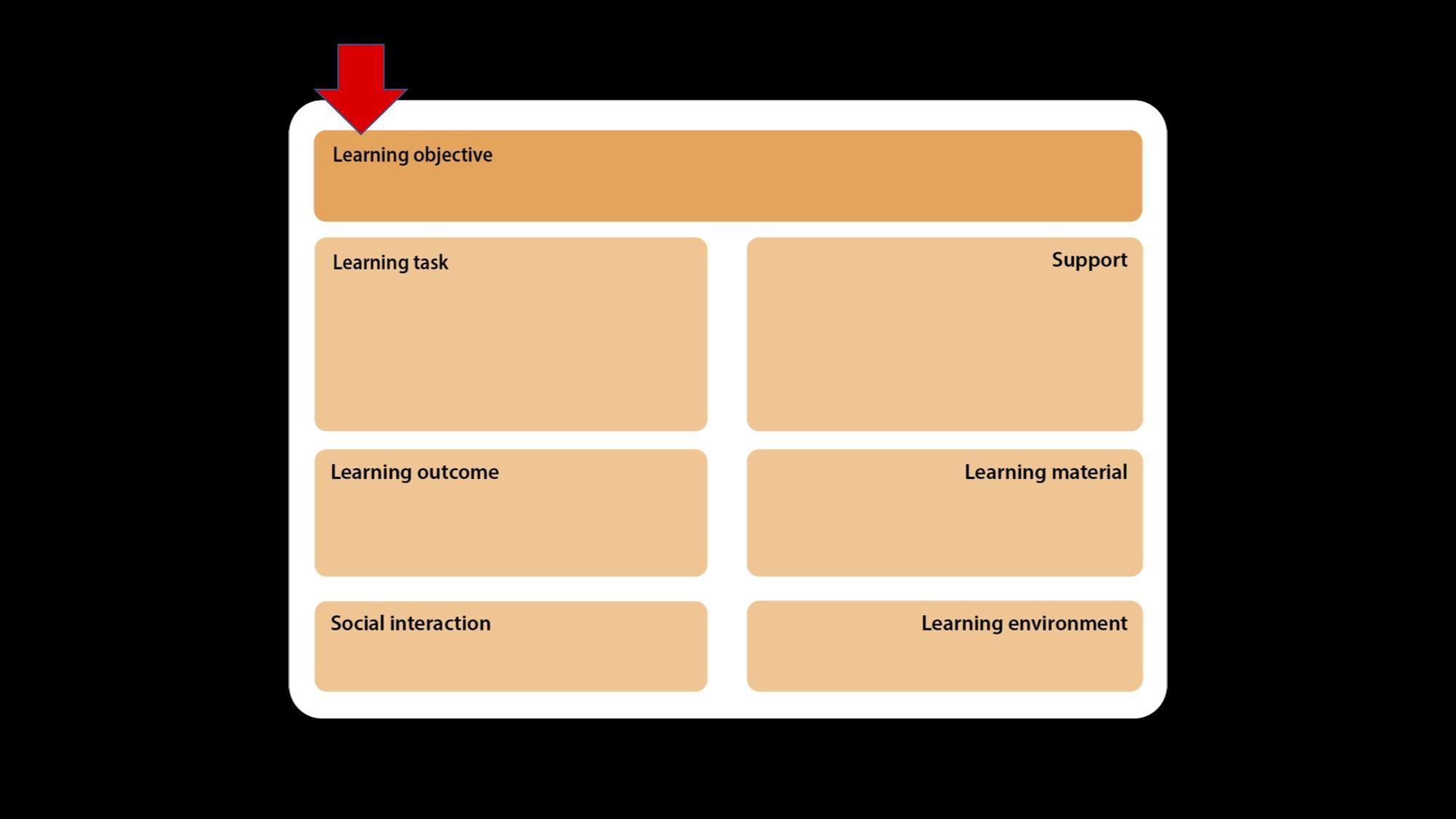
The learning objective (picture 6) describes knowledge, skills and abilities, as well as competences. It is what learners will acquire by performing the learning activity.
When defining a learning objective, we start from the learners‘ perspective and their prior knowledge and expertise. It makes no sense to formulate learning objectives for beginners, while the audience are advanced students that can build on to a broad set of prior knowledge or vice versa.
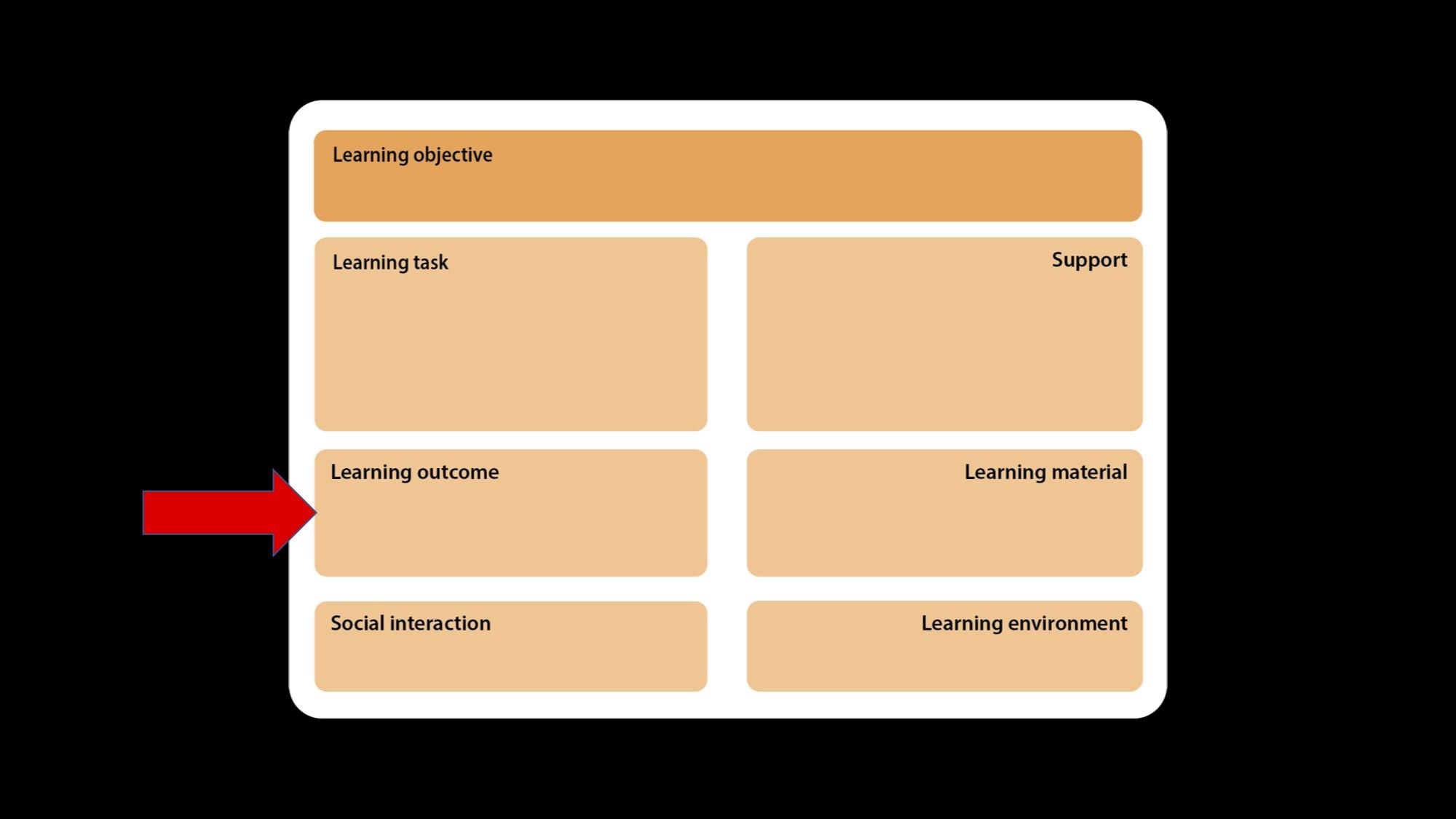
The learning outcome (picture 7) defines the expected performance of the learners when completing the learning activity. This can be a „product“ – for example an essay – or an „experience“ – for example a literature search. The learning outcome always has a concrete and measurable result, that helps to assess students‘ performance.
Goals and objectives need to be related to each other. This is what is meant when people talk about constructive alignment.
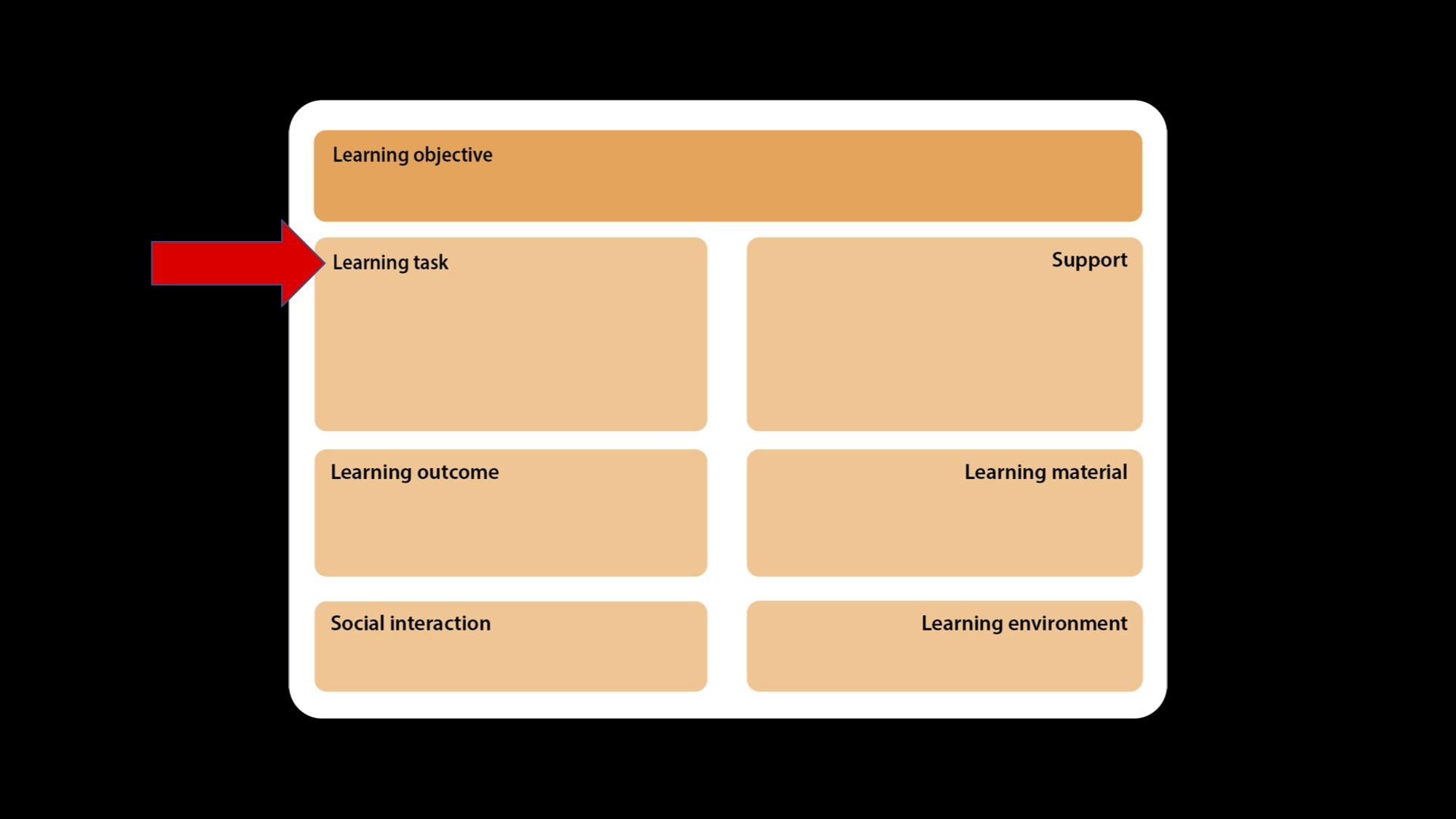
The learning task (picture 8) refers to what learners have to do to produce the desired learning outcome. The task must be defined clearly and precisely, meets the point, and contains all necessary information. It is best to start with one learning verb from the front side.
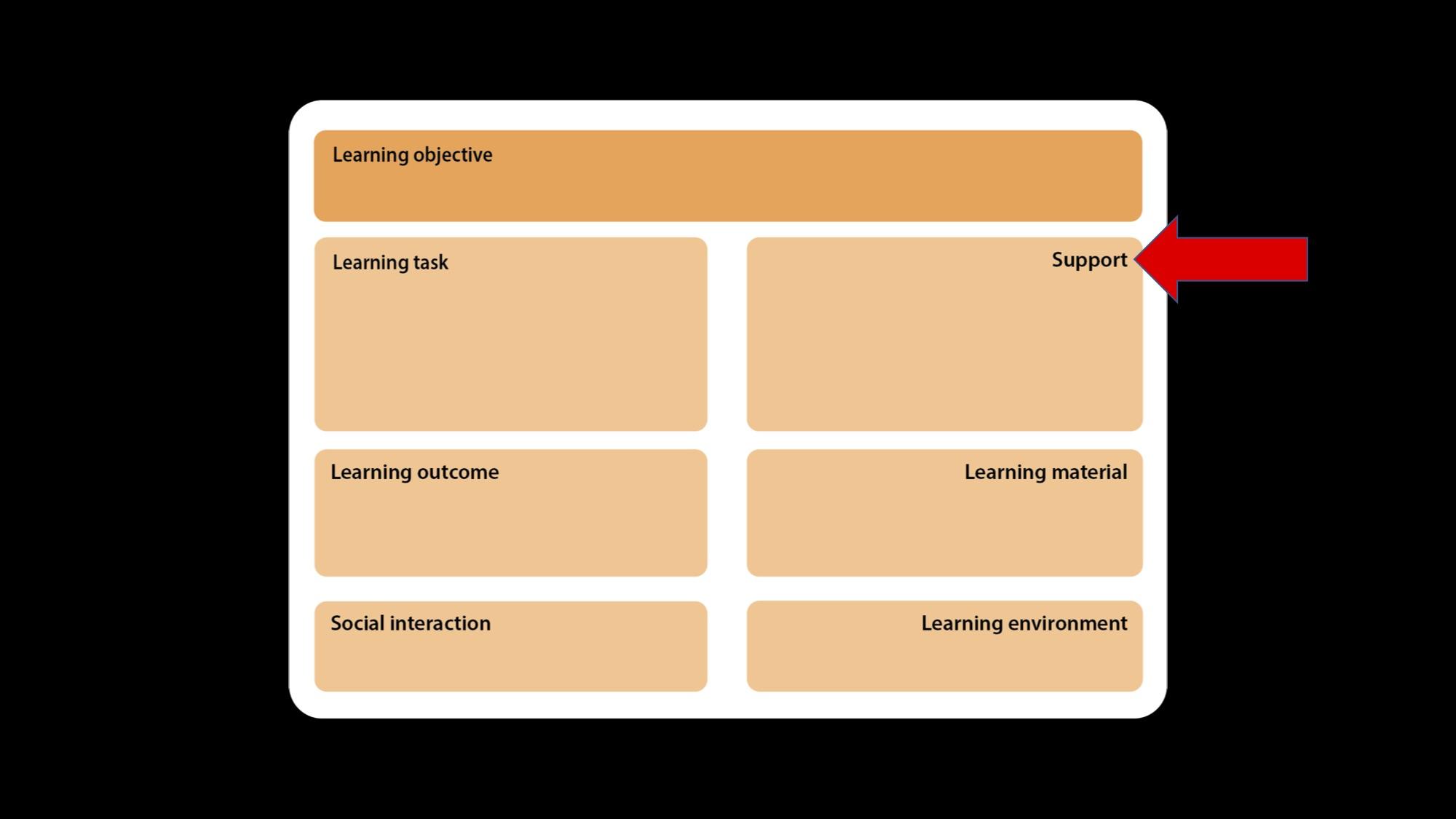
The support (picture 9) describes the assistance of the lecturers, so that students can complete the task. For support statements we start with a teaching verb from the front side.
Especially for online activities, it pays off to be clear about the support, because unlike face-2-face situations, improvising online is not always possible.
Together, learning task and support define the tasks for the actors of the learning activity.
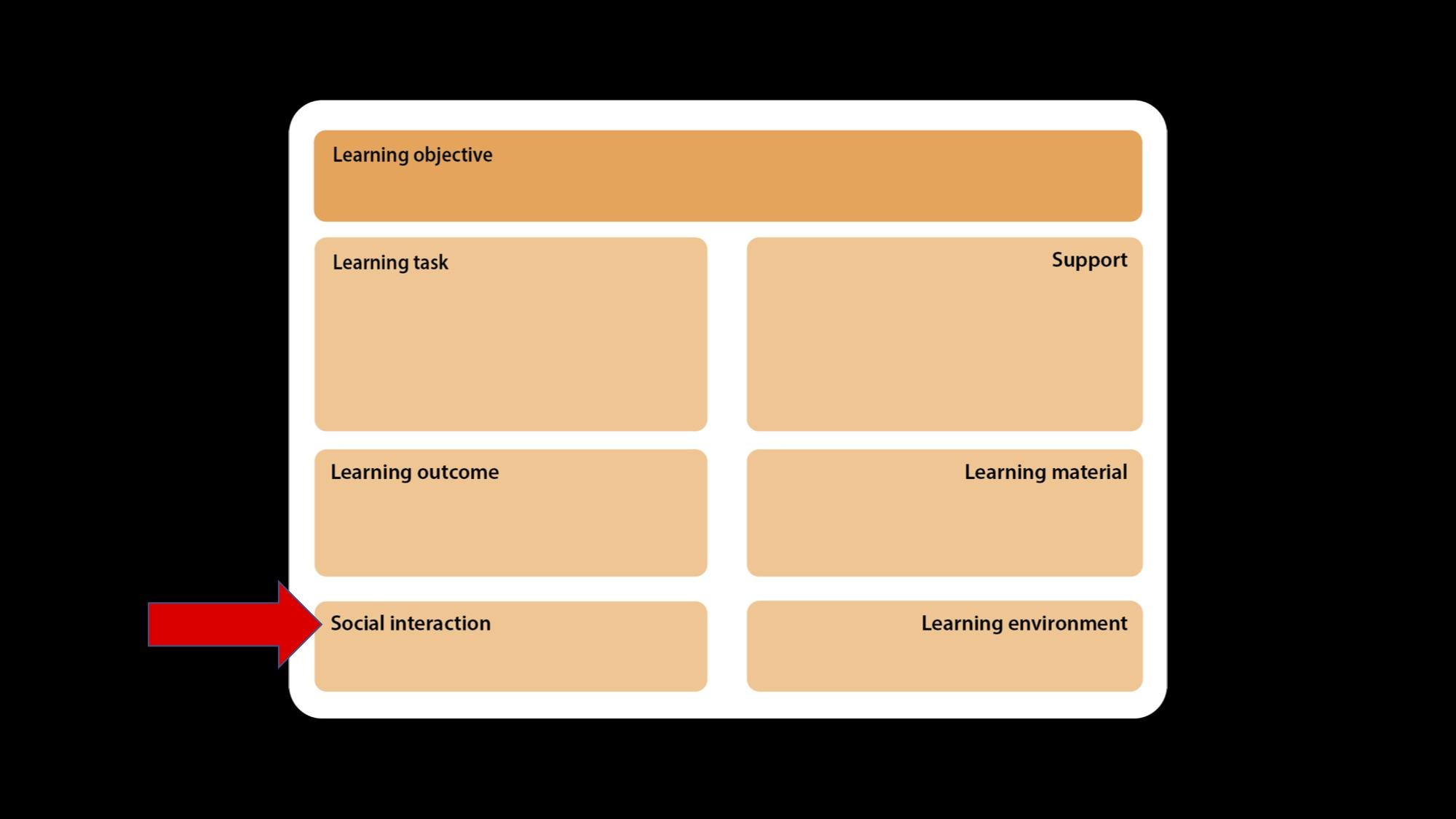
For a successful learning process the social interaction is also important (picture 10). Depending on learning objective, learning activity and learning outcome, a task might require individual work or group work.
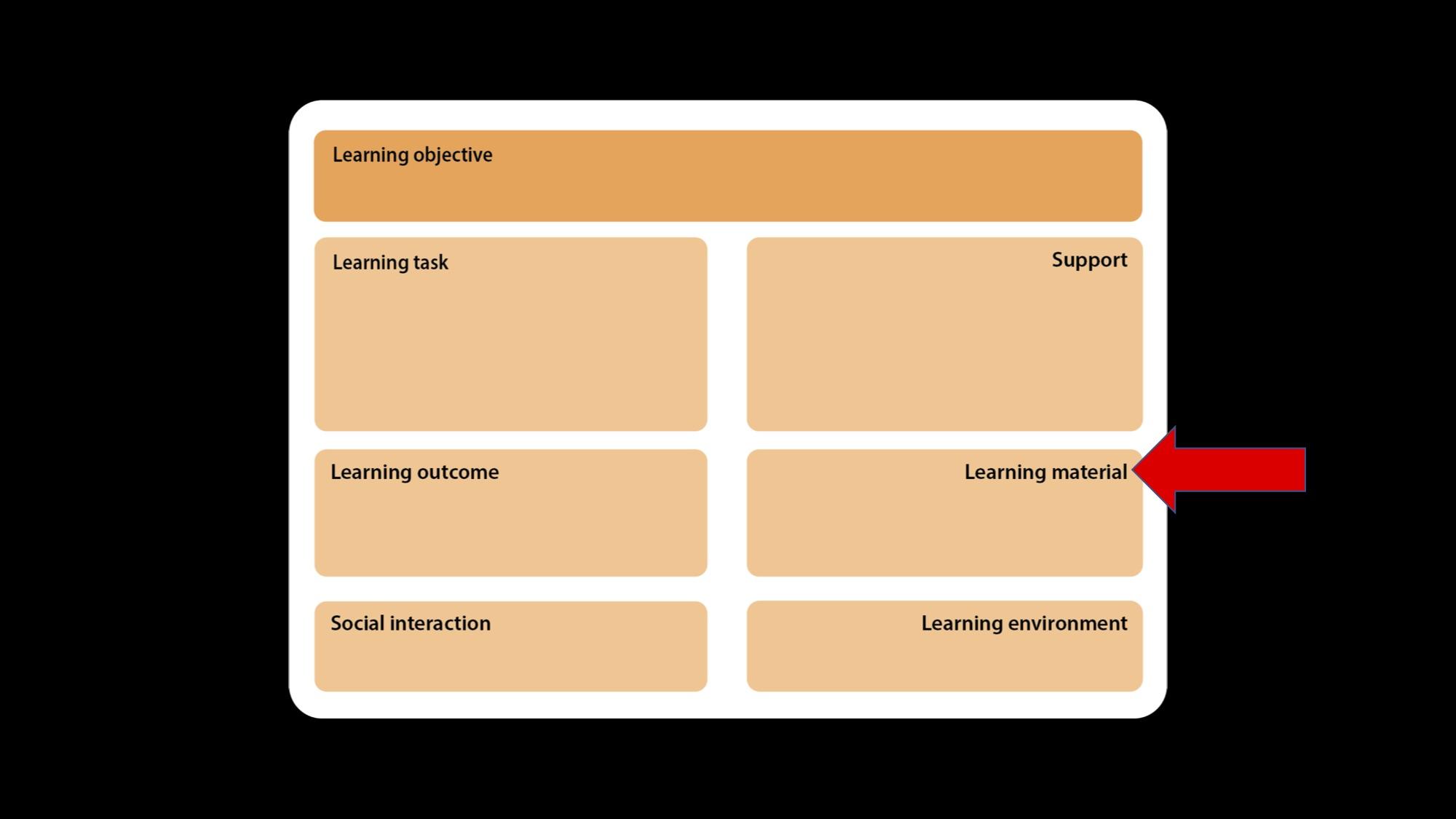
The learning material (picture 11) refers to resources and tools that support the learning task. This can be both, analog and digital. If the activity takes place in an online setting, this refers for example to a tool of the learning platform such as a discussion forum. It is important that the selection of the medium is suitable for the desired task. On the front side the cards list example tools for the selected activity for different interaction modes in the learning environment.
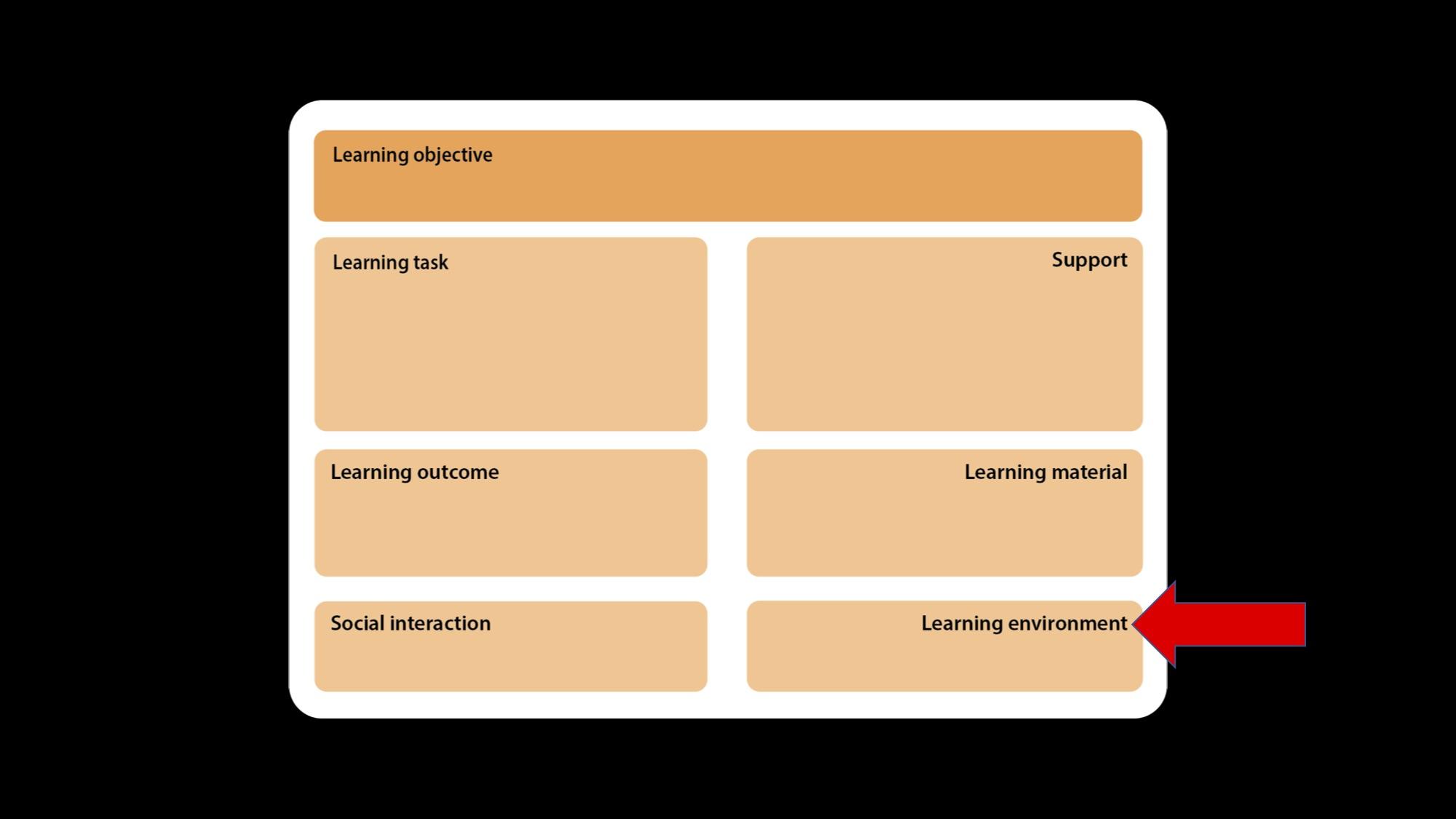
The learning environment (picture 12) refers to the location or setting in which the learning activity takes place. This can be face-2-face in the classroom, online in the LMS, or in a laboratory. The description of the learning environment completes the rough planning of the learning activity.

When multiple learning activities are aligned with the learning design cards, the educational design becomes visible through the arrangement of the cards (picture 13). They help us to assign learning activities to presence and online learning phases. This makes it very easy to „blend“ and design a course with different learning activities.
The LD-Cards are licensed under CC BY-ND.
Contact
Mag. Dr. Marion R. Gruber, University of Zurich, Faculty of Arts and Social Sciences, Dean’s Office, Digital Education and Research (DLF)
Dr. Christian Glahn, Mobinaut.io
Resources
Designing for Great Teaching with Learning Design Cards
Learning Design Cards (German)
Learning Design Cards (English)
Learning Design Cards (French)
Learning Design Cards (Italian) coming soon
Learning Design Cards (Dutch) coming soon
Learning Design Cards Video (German)
Workshop, JTEL Summerschool, Bari, 2019, Slideshare:
Design Thinking for Technology Enhanced Learning from Marion R. Gruber and Christian Glahn
References
Leclercq, D., & Poumay, M. (2005). The 8 Learning Events Model and its Principles. Liege, Blegium: University of Liege. http://www.labset.net/media/prod/8LEM.pdf
